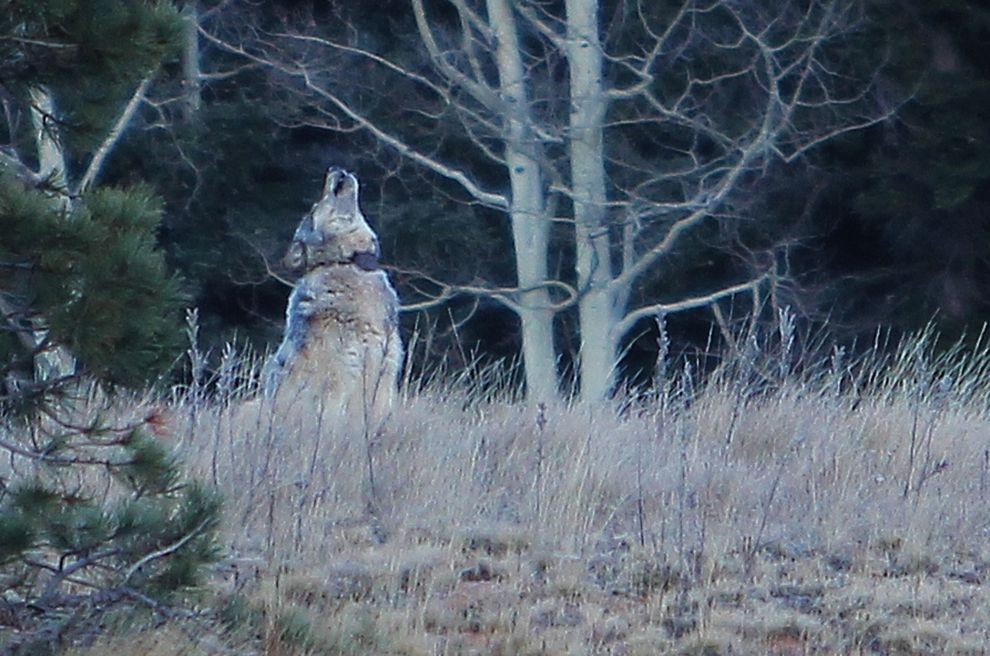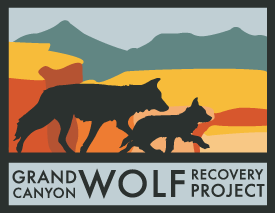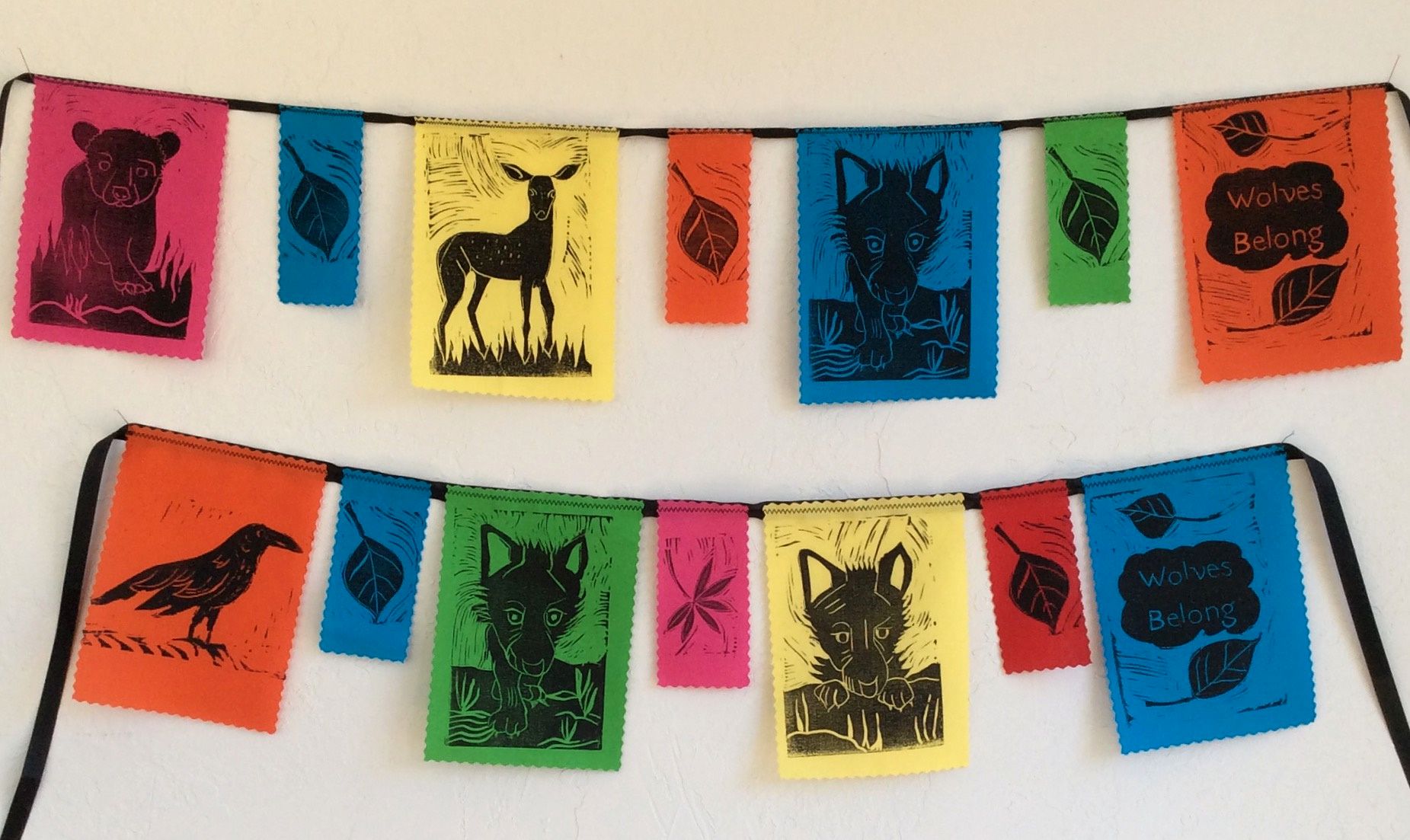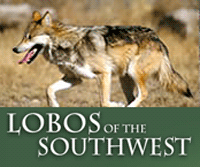Female Grand Canyon Wolf is Fully Protected Under Endangered Species Act – For Now
Grand Canyon Wolf Recovery Project ~ Wildlands Network ~ Sierra Club- Grand Canyon Chapter ~ Grand Canyon Wildlands Council ~ Wolf Conservation Center ~ Western Wildlife Conservancy
For Immediate Release, November 21, 2014
Media Contacts:Emily Renn, (928) 202-1325, Grand Canyon Wolf Recovery Project
Ellen Winchester, (928) 638-2389, Kaibab Lodge
Kim Vacariu, (520) 390-3969, Wildlands Network
Sandy Bahr, (602) 253-8633, Sierra Club – Grand Canyon Chapter
Kim Crumbo, (928) 606-5850, Grand Canyon Wildlands Council
Maggie Howell, (914) 763-2373, Wolf Conservation Center
Kirk Robinson, (801) 468-1535, Western Wildlife Conservancy
GRAND CANYON NATIONAL PARK, Ariz.— The U.S. Fish and Wildlife Service has confirmed that a female northern Rockies gray wolf is roaming the North Kaibab National Forest near the North Rim of the Grand Canyon. This pioneer traveled hundreds of miles to northern Arizona, an area that scientists have said is one of the last best places in the Southwest for wolves. The Grand Canyon wolf is currently fully protected under the Endangered Species Act, but could lose those protections under an Obama administration plan to strip gray wolves of protections nation-wide.
Representatives and volunteers from the Grand Canyon Wolf Recovery Project, a Flagstaff-based non-profit that has worked since 2005 to build support for wolf recovery in the Grand Canyon region, celebrated the news.
"This is an exciting, historic development that affirms both the peer-reviewed science that identifies this area as excellent habitat for wolves and the need to maintain Endangered Species protections for wolves." said Emily Renn, Grand Canyon Wolf Recovery Project's executive director.
Local business woman Ellen Winchester, whose family has owned and lived at the Kaibab Lodge five miles north of the Grand Canyon North Rim for the past ten years, said she and her family feel blessed to have heard and seen this wolf.
"This is our home and business and we who live in the forest have a healthy respect for the animals. The Kaibab National Forest, The Grand Canyon North Rim and the animals that live there are a legacy for our children and our children's children. I was thrilled to hear wolf song. I welcome the wolf to the Grand Canyon which is my back yard. There is plenty of room for all to live together safely" said Winchester.
Wolves were once native to this area but were extirpated by a federal extermination program in the early 1900's. Wolves have yet to be recovered over most of their historic range and a plan condemned by scientists is expected to strip gray wolves of their endangered species protections in key places across the United States.
"This is just the latest, exciting episode in a series of wide-ranging wildlife stories that shows the real need for connected habitat over big landscapes like the Western Wildway," said Kim Vacariu, Western Director for Wildlands Network.
"This wolf has traveled a long way to get to Grand Canyon, a place that has been missing its wolves for decades," said Sandy Bahr, chapter director for Sierra Club's Grand Canyon Chapter. "You cannot help but feel hopeful when you see that despite many obstacles -- from roads and development to politics, this animal has made its way to a place, Grand Canyon, that is ideal for wolves, an area that has been repeatedly identified by scientists as a place where wolves should be restored. The message is clear, wolves belong at Grand Canyon."
Kim Crumbo, Conservation Director for Grand Canyon Wildlands Council, said "That a determined wolf could make it to the Canyon region from the northern Rockies is cause for celebration, and every effort must be taken to protect this brave wanderer and to continue the work to protect the wildlife corridors she used to get here."
"She came, she saw, she made history," said Maggie Howell with the Wolf Conservation Center in NY. "This wild milestone is a demonstration of the great potential for wolf recovery in areas where this keystone species has yet to take hold. But with USFWS poised to remove federal protections nationwide, will other pioneers be able to return to areas with suitable habitat and availability of prey?"
"This is wonderful news. A wild gray wolf from the northern Rockies has traveled over a 1000 miles to demonstrate that Utah and Arizona are home to wolves! We should welcome this and future wolves home, and let them live in peace," said Kirk Robinson, Executive Director for Western Wildlife Conservancy in Utah.
Background
The Obama Administration's planned national wolf delisting would remove federal Endangered Species Act protections across most of the continental United States, and would give individual states, many of which are extremely hostile to wolves, the authority to manage wolves. Without legal, federal protections, wolves would not be able to safely move across state lines to suitable habitat, as this one has.
Currently, wolves have returned to less than ten percent of their historic range in the lower forty-eight states. Wolves from the north and south historically met, interbred and thrived in the Southern Rockies and today's science tells us there continues to be an abundance of suitable wolf habitat in southern Wyoming, Utah, Colorado, New Mexico and Arizona, including the Grand Canyon area.
Groups collaborating on the website www.mexicanwolves.org earlier today announced a contest for children and youth under age 18 to give a name to the Grand Canyon wolf.
###
Photo courtesy of AZ Game and Fish Department
Read the US Fish and Wildlife Service press release here





